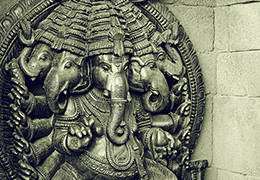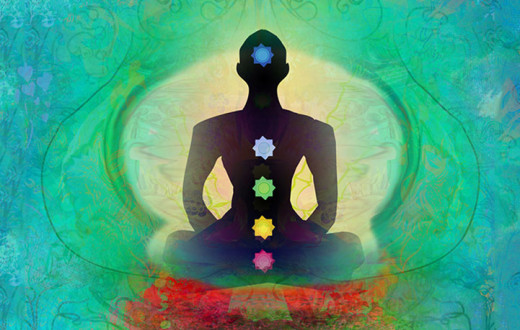
What is Kundalini?
There is consciousness present within our whole body, and it is divided in the upper and lower halves of the body. This divine force or consciousness is called as the Kundalini Shakti.
Kundam is the body or pot, and the energy inside that is the Kundalini energy. When the energy in the body rises up (through the chakras), it has many manifestations. All different emotions are just manifestations of this one beautiful energy.
When this Kundalini Shakti is awakened and rises within us, then our entire life becomes a dance of joy and bliss. Then nothing in the world can trouble us, and the entire world becomes an amazement when the power of consciousness gets awakened within you.
What are chakras?
Chakras are the nerve centres in our body. There are 1,72,000 nadis (channels of metaphysical energy or life-force) in our body, and there are various nerve centres for these 1,72,000 Nadis. The human body actually has 109 nerve centres, but among those, nine centres are important, and even in those nine, seven centres (chakras) are of primary importance.
What are the seven chakras and where are they located in the body?
- The first chakra is at the base of the spine, at beginning of the anus and is called Muladhara.
- Just above that is the next chakra which is called Svadhishthana.
- The third chakra is just above the navel and is called Manipura.
- Above that is the Anahata chakra which is in the center of the chest
- Then comes the throat chakra called Visuddha
- Above that is the chakra in-between the eyebrows called Ajna
- The last chakra is on top of the head called Sahasrara.
What are the emotions or sensations associated with each of the seven chakras?
When energy (kundalini) flows through the chakras, there are different emotions, feelings or sensations that one experiences. It is one energy that manifests itself in different ways in the different regions of the body.
Muladhara chakra:
When the Muladhara chakra is activated (through the flow of energy, one experiences enthusiasm in life. When it is dormant, then one experiences dullness and inertia. One does not feel interested in anything.
Svadhishthana chakra:
The same energy moves upwards to the second chakra which is located behind the genitals and it manifests as procreation or creation – meaning in the form of creative activity or as sex drive.
Manipur chakra:
The same energy moves upwards to the navel region and manifests in four forms – jealousy, greed, joy and generosity. These are the four flavors of consciousness that manifest in the third chakra.
Santa Claus, the Laughing Buddha, or a wealthy businessman, they all have a big stomach representing joy and generosity.
Anahata chakra:
From the navel region, the energy moves upwards to the heart region and manifests in three forms – fear, love and hatred.
When people feel hatred or fear or love, the sensation is felt in the heart region. When someone’s heart is broken, it means that the love has become sour and turned into hatred. Love, fear and hatred are all the same.
When there is love, there is no fear. When there is fear, there is no love. At any point of time, only one of the three emotions take the front position while the other two go in the background. It is not that they disappear entirely.
People who feel fear also have love. When love is predominant, then there is no fear or hatred.
Vishuddhi chakra:
When the same energy moves to the throat Chakra, it manifests in two forms – gratitude and grief. When you are grieving, your throat chokes. And when you feel very grateful, then also your throat chokes.
Ajna chakra:
When the consciousness moves to the center of the forehead, it manifests as anger, awareness or alertness. Knowledge and awareness are depicted by the sixth chakra. The same point is also the seat of anger, and is also said to be the region of the mystical Third Eye. You must have read or heard the story of how Lord Shiva opened His ‘Third Eye’ and burnt Lord Kamadeva into ashes. This Third Eye is the seat of anger as well as the seat of wisdom.
Sahasrara chakra:
When the Consciousness moves to the top of the head, then one experiences only bliss. There is nothing else. You no longer feel any duality, any sense of conflict or separation. You feel totally connected and one with everything. You feel so blissful!
This upward or downward flow of energy keeps on happening very naturally and spontaneously in life all the time.

Subscribe
If you enjoyed reading this content and would like to receive a notification on our future updates, you can subscribe here.
You can also write to us on webteam.wisdom@artofliving.org for any questions or comments.

The Symbolism of Ganesha
Who is Ganesha?
What is the meaning of Ganesha?
Why does Lord Ganesha have the head of an elephant?
Gurudev Sri Sri Ravi Shankar explains the significance and science behind the form of
Lord Ganesha.










































